I often get asked by golfers of all levels, what they need to do to get to the next level of performance. In a personalised individual programme, I perform an initial assessment for the first session which covers many different areas of the game. From short pitch shots, to dispersion accuracy, psychological skills and physical capabilities. From here, we can target areas we would like to improve on, which will lead to a more complete game and higher chance of better scores.
However…
This isn’t always an option due to time and or life constraints!
So, I am going to show you some of the main differences between certain handicaps, to give you an insight in what you might need to practice to reach the next level.
The following statistical data is from Shot Scope, a golf shot tracking system. The data is collected from 52 different countries across thousands of rounds.
This is an AVERAGE, so you may be thinking “Well Lewis I actually am better than that with my driving and my handicap is higher than that”… check the other areas, because you maybe losing a lot of strokes elsewhere!!!
We are starting with the flat stick and working our way up through the bag…
PUTTING
Lower handicaps tend to make more 1 putts than 14 and 20. But the biggest percentage change is in 3 putts, with an 8 handicapper at 10%, vs a 20 handicapper at 19%. This shows us that if you are a high handicapper, you need to be lagging more putts and eliminate those dreaded 3 putts!
60-100 YARDS
This graphic shows us two things…
- Hitting from the fairway can give us up to a 25% more chance of hitting the green than the rough or the bunker
- The major difference in this category is the average proximity to the hole, with 8 handicappers being 12 feet closer on average to the hole than a 20 handicapper.
150 YARDS
A massive change in green in regulation (GIR) percentage from 150 yards across the 3 handicap levels. A green in regulation is when you are on the green with a two putt for par or better… for example, par 5 green in 3. If we increase our GIR percentage, we have a greater chance of holing some putts and lowering our score.
CAUTION – GIR is a very generic statistic, we often find better players have a high GIR percentage but might not score very well… Think if we hit every green in regulation, but our proximity to the hole is always 50 feet… we aren’t going to hole many putts! This is why they use proximity to the hole on tour a lot and strokes gained: putting.
WANT TO KNOW MORE ABOUT STROKES GAINED? CLICK HERE TO VIEW ROBS BLOG ON STROKES GAINED.
DRIVING ACCURACY
We could have guessed, but the lower handicapped golfer hits more fairways.
What I find most interesting about this stat is the minimal difference between driver and 3 wood accuracy. This begs the question… why hit 3 wood off the tee? This would be more for placement, for example a fairway bunker or hazard which driver could reach.
You may be thinking some of these differences aren’t that much, but added up over each hole, across each round, they add up to a lot of shots!
STRIKE LOCATION
Where we strike it on the club face makes a big difference to impact factors such as ball speed, spin, launch, start direction… all of which influence ball flight factors such as shot shape, distance, amount of curvature. Therefore, strike is KEY!!!
Here we have a 3 time major winner, data courtesy of The Golf Lab
Below is an 8 handicapper
Here we have a 20 handicapper
We can see as we increase the handicap, strike gets a lot more varied.
Key takeaways…
Record stats and see how your scores match up to the averages above – If you are beating your handicap then well done! If you are falling below your handicap then you can target this area.
Get to work on how you can improve that stat – What do you need to do to make this stat better? “more practice” is not always the answer.
Start to understand your tendencies related to this stat – This is where practice gets more purposeful and we can get some real work done. Finding your tendency allows you to focus on an objective, for example driving accuracy – tendency to miss left of fairway > the quest to find the answer to this miss begins!
Start understanding your strike location, the consistency of the strike and what does that mean to your intended shots.
Case study
I will give you a case study on my own game over the past year…
I felt like I was playing good golf but struggling to score under my handicap. Looking at my post round stats, I found my GIR was high, but my scores were not matching. Reflecting on each of these GIRs made me realise I was not hitting it close enough to the hole to actually make a score. If anything I was hitting far enough away to 3 putt!!
After analysing my distance off the tee, I realised I was often 80-120 yards away from the hole and my miss tended to be long right.
Next practice session, I went back to this yardage and found I was missing long right a lot, reinforcing this on course miss. A quick session on GC Quad (and an external opinion from Rob!) found a technical fault leading to this miss… PERFECT!
If you need any help on recording statistics, identifying what you need to improve on, or finding out what your club numbers are or just want to chat golf come and speak to me, or drop me an email!
Lewis Clarke
Performance Coach
@LClarkePCoach
LCPC@peterfieldgolf.uk










